1. Overview
Clothing is one of the three requirements of material life (eating, living, and wearing). It is the earliest cultural product of human society. In each period up to now, Vietnamese costumes have changed a lot to suit today’s life.
Costumes in Vietnam also vary quite a bit depending on where you visit. What you should wear in a country depends not only on the weather of that place but also on religious, cultural, and local issues that can affect your clothing. Vietnam is not a country with too many laws and regulations regarding how to dress, but you should pay attention to some of the following essential information about what to wear in Vietnam below to enjoy your trip safely. the most complete way.
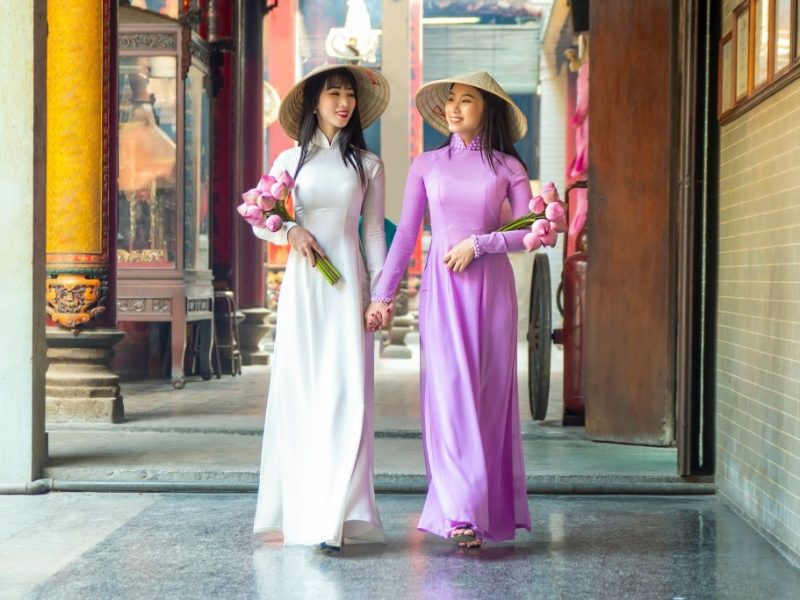
2. The most essential information you should know
2.1. What to wear in Vietnam: when traveling seasonally
In Vietnam, the weather between the North and South is markedly different. That’s why the costumes in each place have their own characteristics. If in the North there are four seasons: spring, summer, autumn, and winter, in the South there are only two seasons: sunny and rainy.
2.1.1. In the north
2.1.1.1. Spring
Spring starts from February to April of the solar calendar. This is one of the best times of year to visit the North. With mild weather at the beginning of the season and warm weather at the end of the season. Along with that, there are hundreds of flowers blooming in all different regions: peach blossom, plum, banflower in the Northeast and Northwest, etc.

From the beginning of February, the weather changes from winter to spring, so the weather is a bit chilly. Temperatures range from16 to 20 degrees Celsius, often drizzle. You should bring a warm coat and a light jacket. In addition, you should prepare an umbrella and a thin raincoat for drizzly days.
From March to April, the weather is warm. The average temperature is 20–25 degrees Celsius. You should bring a thin windbreaker in case the weather changes suddenly on windy days in the northeast.
2.1.1.2. Summer
Summer in the North starts from May to July of the solar calendar. This is also the peak season for tourism in the North. Especially with tours to Cat Ba, Halong Bay, Sam Son, Cua Lo, Quang Binh, etc. Summer in the North is characterized by intense sunshine and showers. Sometimes there are Lao winds. Clothing should use light and airy fabrics with good sweat absorption, light, soft colors. In addition, umbrellas, sunglasses, sunscreen, wide-brimmed hats, etc. are also necessary accessories.
2.1.1.3. Autumn
Autumn in the north lasts 3 months, starting from 8 to 10 on the solar calendar. It can be said that this is the season with the best weather of the year to travel to the North. With the cool and chilly air in the evening, you should wear light, long-sleeved clothes. However, although the weather is pleasant but dry, you still prepare yourself with sunscreen and moisturizer to make your body most comfortable.
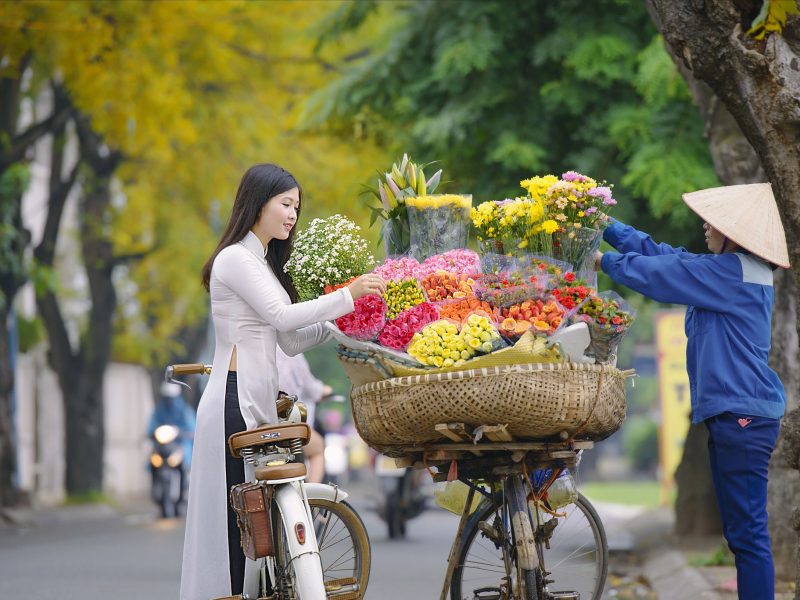
2.1.1.4. Winter
Traveling to the North in the winter is a very interesting experience. Winter lasts for 3 months, from November to January of the solar calendar. Winter in the North is characterized by cold and dry weather in the early winter and cold and wet weather in the late winter. On the coldest days, the temperature can be as low as 5 degrees Celsius. Particularly in some high mountain areas such as Sapa, Mau Son, Ha Giang, etc., the temperature can drop below 0 degrees Celsius. On those days, it often appears to snow on some high peaks such as Fansipan (Sapa), Mau Son (Lang Son), etc.
If you travel to the North on those days to the above places, you will have great experiences with the Northern climate. You should choose warm sweaters and felts, combined with life jackets and outerwear. In addition, do not forget to moisturize and add enough water to the body to prevent chapped skin.
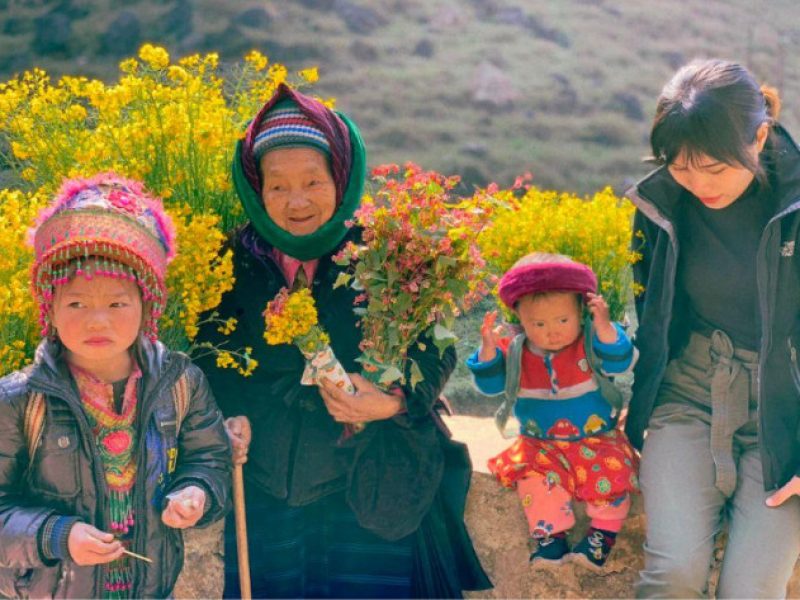
2.1.2. In the South
In the South of Vietnam (Saigon, Phu Quoc, Mekong Delta provinces, etc.), From November to April is usually the dry season. Early May to October is the rainy season, with the highest rainfall in July and August. Southern Vietnam has an average year-round temperature of 30°C. With the diverse climate in the south, you should wear loose, light clothes that can be worn in many layers, such as t-shirts, cotton, long pants, and shorts. You should also bring a pair of slippers, a light rain shirt, or a travel umbrella in the rainy season. Also avoid using clothes made from wool in the rainy season because it will take a long time to dry, etc.
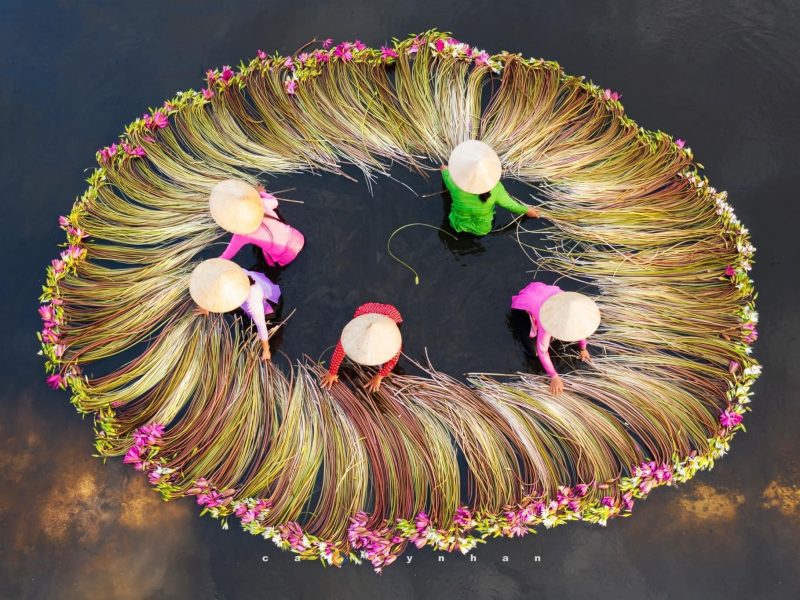
2.2. What to wear in Vietnam – when participating in activities while traveling
There are many activities to try when traveling in Vietnam, so choosing the right clothes to wear will help you have a complete experience.
2.2.1. Hiking
There are many great mountains in Vietnam for hiking and climbing. You can see more walking itineraries here.
If you plan to go hiking, in addition to basic clothes such as t-shirts, pants, jackets, and hiking shoes, remember to bring protective pads, a pair of sandals, sunglasses, blister-proof socks, and a raincoat. Choosing the right pair of hiking shoes will help you a lot during your trip.

2.2.2. Swimming and sunbathing
Vietnam is famous for its beautiful beaches; it would be remiss if you did not include a beach trip in your list. Although locals are more open-minded, it is not advisable to get naked or semi-naked at the pool and beach. You should at least wear a pair of shorts, a jacket, or a skirt to cover your bikini and swimsuit. You can refer to more articles about the most beautiful beaches in Nha Trang, Vietnam.
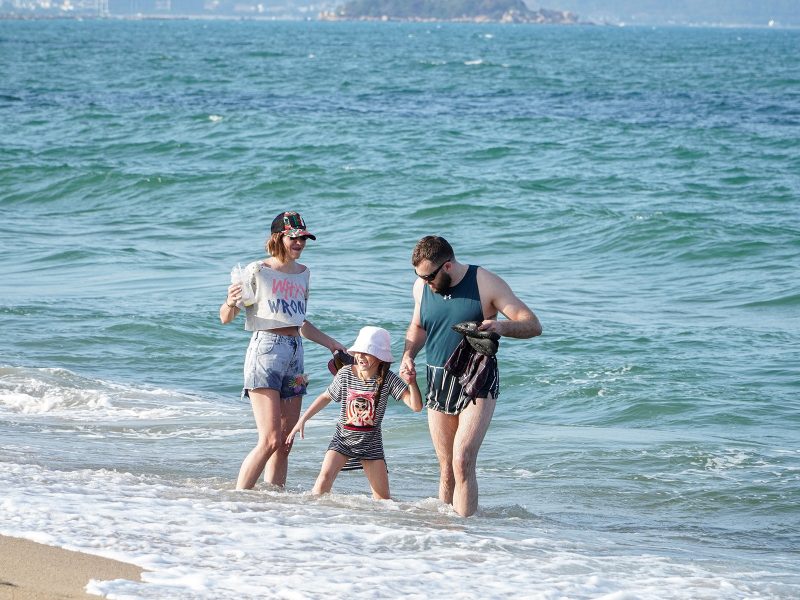
2.2.3. Riding a motorcycle:
This is a fun experience, but to get the most out of it, long pants and shorts are much more appropriate. If you wear a short-sleeved shirt, you should put on a light jacket to avoid the sun. To travel long distances by motorbike in Vietnam, you should prepare yourself with a high-quality helmet, wearing active clothes will be more comfortable when riding a motorbike.

2.3. What to Wear in Vietnam – When You Visit Sacred Places
Vietnam is known for its Buddhist culture, and so many pagodas and temples are tourist attractions not to be missed. If you want a full experience, following the rules at these sacred sites is a must. It is very important to dress appropriately to show respect at temples and shrines:
- Sleeveless tops and shorts are prohibited.
- The skirt must be ankle-length.
- All off-the-shoulder tops are not strictly prohibited, but you can get nasty looks. A super-thin, transparent shirt is unacceptable.
- One tip is to bring a light, long scarf to cover any exposed parts of your clothing.
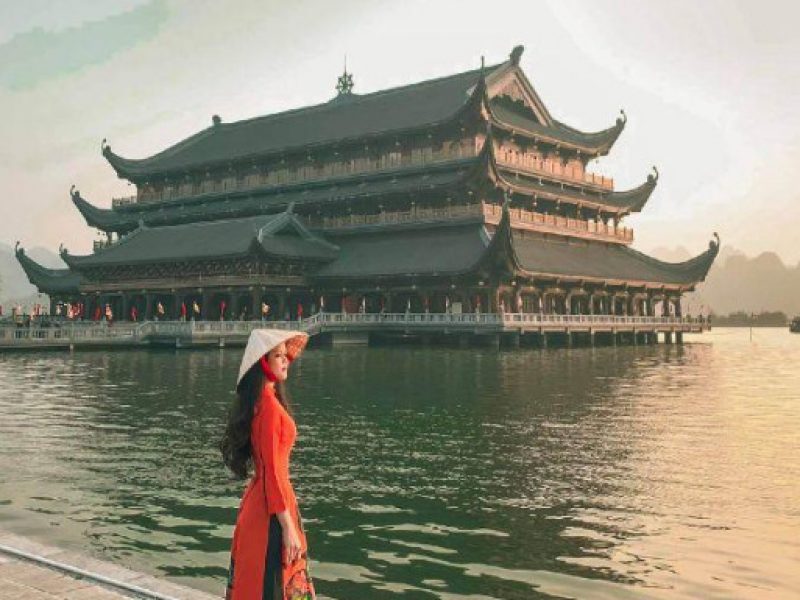
2.4. Some notes on wearing costumes when traveling to Vietnam
Here are some additional clothing tips for you when traveling or living in Vietnam:
- Clothes in Vietnam are usually sold at very affordable prices, ranging from 4.23 USD to 12.69 USD for a summer outfit and 8.46 USD to 21.15 USD for a winter outfit. Therefore, if there is not enough space to pack, you can still buy in Vietnam.
- Before going to any tourist destination, check their website to see if there is a notice about prohibited clothing.
- Avoid wearing expensive accessories or designer items on the street.
- Bring some long-sleeve blouses; make sure they’re lightweight, unless you’re heading north during the winter. For men, thin long-sleeved or short-sleeved shirts are fine.
- Bring a long but light skirt; this is useful when visiting temples or just for daily commuting.
- Prepare a shawl that can be used as a skirt when needed, draped over your shoulder, or worn whenever you feel appropriate.
- Bring a pair of flip-flops; when you visit a temple, it’s easier to take off and put on flip-flops than shoes.
- It also avoids making your socks too dirty, and they dry quickly if wet.
3. Conclusion
Vietnam is always full of interesting and fascinating things for you to explore. Hopefully, Metta Voyage’s information on what to wear in Vietnam can help you have a better trip to Vietnam!
4. Contact us
Website: www.mettavoyage.com
Email: info@mettavoyage.com
Hotline 24/7: + 84 989 383 572

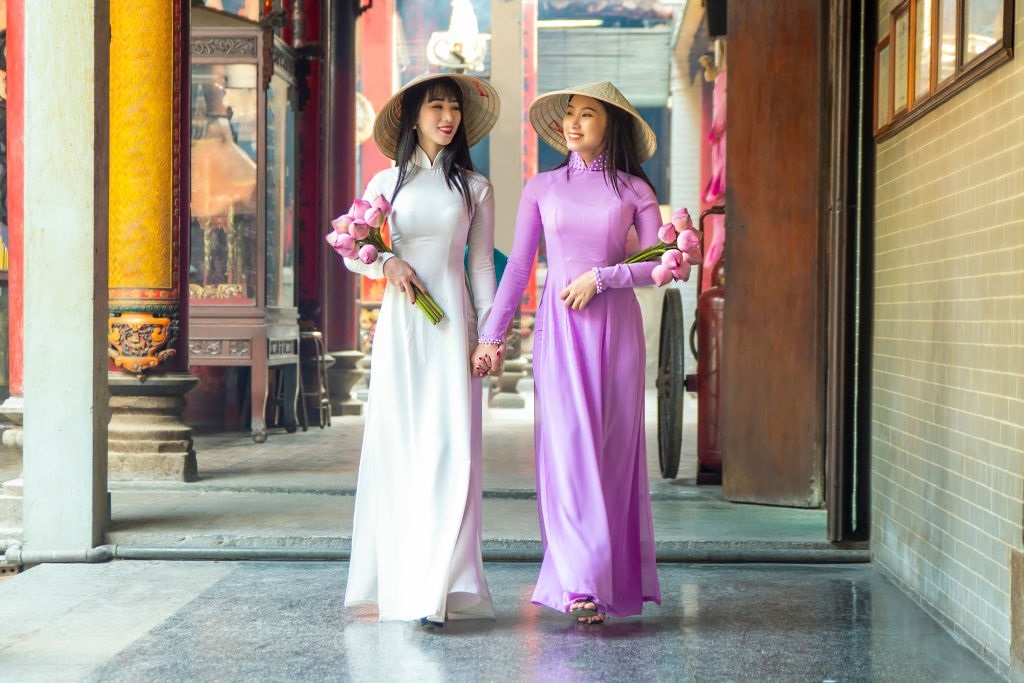

0 Comment